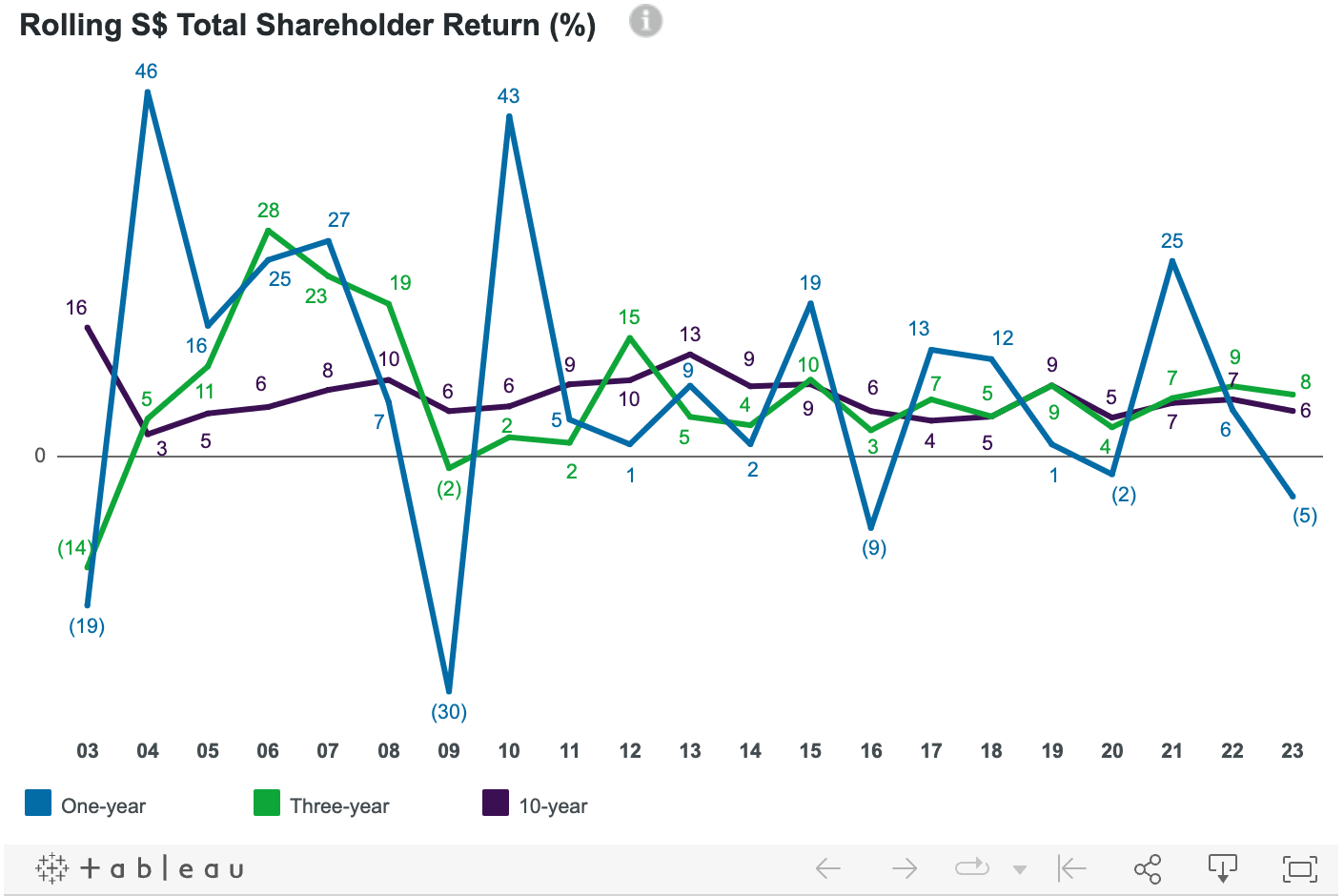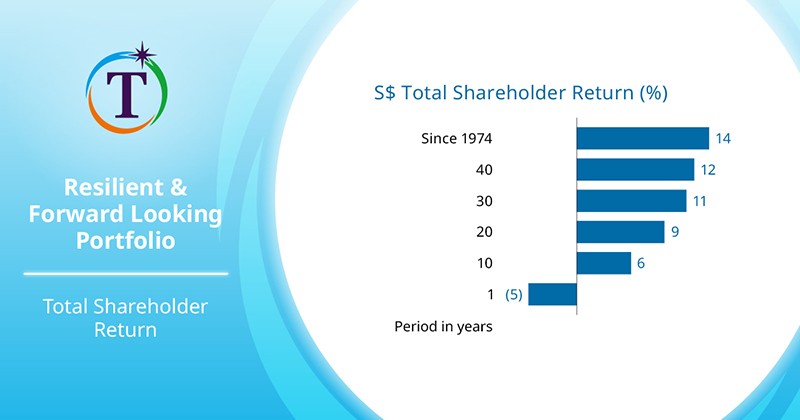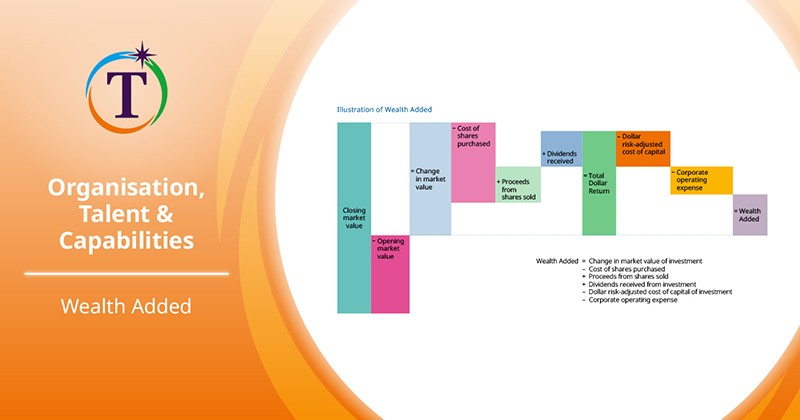Instilling Ownership
Our ownership ethos places the institution above the individual, emphasises long term over short term, and aligns employee and shareholder interests over economic cycles.
Jump to
Our compensation framework aims to foster a high performing and responsible culture, where our employees think and act as owners with a strong sense of intergenerational duty, sharing gains and pains alongside our shareholder. It balances rewards for short term performance and long term value creation.
Our base salaries are benchmarked against relevant global, regional, and local markets, primarily in the financial sector, where we compete for talent. Short term bonuses are driven by financial and non-financial targets. Medium and long term incentives which form a major proportion of our annual total compensation are driven by our portfolio returns.
Deferred incentives and clawbacks are integral to our renumeration.
Returns above our overall risk-adjusted cost of capital determine our Wealth Added (WA) incentive pool, while negative portfolio returns determine our clawback pool.
Deferred incentives and clawbacks are integral to our remuneration. Longer term incentives can be deferred up to 12 years, and are subject to market risks and clawbacks, to account for the sustainability of returns over market cycles.
Incentives can be deferred up to 12 years, and are subject to market risks and clawbacks.
For the year ended 31 March 2023, our one-year Total Shareholder Return (TSR) was -5.07% and three-year TSR was 7.74%. WA was S$54.7 billion below our risk-adjusted cost of capital of 9% aggregated across our portfolio.
Incentives can be deferred up to 12 years, and are subject to market risks and clawbacks.
Annual Cash Bonuses ― Our Short Term Incentives
Annual cash bonuses are driven by company-wide, team, and individual performances, and capped within budgeted limits. One of our annual performance targets requires our three-year average TSR to exceed our three-year average cost of long term debt.
Apart from financial targets, our “Make-A-Difference” (MAD) Programme rewards employees for achieving non-financial goals targeted at strengthening the institution, contributing to their communities, and taking care of their families and themselves.
WA Bonus Bank ― Our Medium Term Incentives
A portion of our WA incentive pool, whether positive or negative, is distributed into each employee’s notional WA bonus bank account, based on the individual’s performance and contributions over four years.
If WA bonus bank balances are positive, senior management staff receive one third payout from their balances. The corresponding payout ratios are half for mid-level management and two thirds for junior management and support staff. Thus, senior management have more of their incentives deferred.
Part of the retained balances are deferred as co-investment grants which vest over the following three years. These units increase or decrease in value based on portfolio performance or market risk. The remaining WA bonus bank balances are subject to clawbacks in the future should portfolio returns be negative.
Co-investment Grants ― Our Long Term Incentives
Our employees may be awarded co-investment grants with performance or time-based vesting conditions. These units grow or decline in value with our yearly TSR, reinforcing the ownership culture of our company. Co-investment units lapse after 12 years.
Part of our positive WA incentive pool funds the Temasek co-investment grants, which are subject to further stringent multi-year Temasek portfolio performance conditions to trigger a five-year vesting. Another portion is held for three to seven years, as a company-wide reserve to be released progressively for time-based co-investment grants. Clawbacks, if any, will first be taken from this company-wide reserve, before being deducted from employees’ WA bonus bank accounts.
Our annual operating budget funds limited time-based co-investment grants, which vest over 7 or 12 years.
To reinforce commitment to our carbon emission goals, we have a carbon charge against our portfolio performance. This reduces our incentive pool for distribution in years with positive WA, and increases the clawback when WA and portfolio returns are negative. A portion of our long term incentives is aligned with our portfolio carbon emissions reduction targets. Vesting is subject to us achieving these targets, and each co-investment grant tranche will have a life cycle of up to 12 years. This drives us to collectively work towards our institutional commitment to halve the net carbon emissions of our portfolio over 2010 levels by 2030, and achieve net zero carbon emissions by 2050.
To reinforce commitment to our carbon emission goals, we have a carbon charge against our portfolio performance.
These co-investment grants reinforce our long term alignment with shareholder interest and the sustainability of our business performance over different market cycles.
Co-ownership in Practice
As part of co-ownership alignment, clawbacks are made to our employees’ retained bonus banks when WA and portfolio returns are negative.
In the last decade, we had three clawback pools. Of these, two were clawback balances carried forward when the deferred WA incentives were not enough to clear the clawback pools from prior years. Clawback balances were then made good from future years’ positive WA.
The negative one-year TSR for the year ended 31 March 2023 will result in a clawback pool, with deductions to be made from employees’ WA bonus bank balances and prior years’ undistributed WA incentives pool.
Effective 1 April 2023, we have instituted a policy to recover paid-out incentives in the event of financial misstatements and/or misconduct by staff that have material impact on the performance or reputation of the firm.
This demanding framework for sharing gains and the associated risks and pains through market cycles has been tested and reaffirms our ownership ethos.
(for year ended 31 March)
WA Incentives of Key Team
- Wealth Added (WA) in dollars
- Total Shareholder Return in dollars (Total Dollar Return or TDR)
- Paid-out portion of WA Bonus earned for prior year’s performance
- Deferred portion of WA Bonus earned for prior year’s performance, with future clawback risks
- Co-investment units which grow or shrink with total returns to shareholder, and are subject to performance and time-based conditions
- Clawback of deferred WA Bonus from prior years
- Clawback balances carried forward for future bonus offset
- Part of earned WA Bonus used to offset the clawback balances brought forward from prior year
Chart Notes



